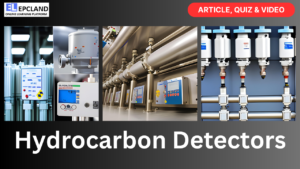Amine Treating: Essential 10 Questions Unlocked
Natural gas straight from the ground often contains impurities like hydrogen sulfide (H₂S) and carbon dioxide (CO₂), collectively known as acid gases. These sour components can be corrosive, hazardous, and reduce the heating value of the gas. Amine treating is a crucial process in the oil and gas industry designed to remove these unwanted substances, producing clean, or ‘sweet,’ gas suitable for transportation and use. This fundamental chemical engineering process utilizes a circulating liquid amine solution to selectively absorb the acid gases, ensuring the quality and safety of the final product. Understanding the mechanics of amine treating is essential for anyone involved in gas processing operations.
Table of Contents
- Introduction
- The Quiz Section: Test Your Knowledge on Amine Treating
- Major Takeaways
- Conclusion
🔷 Check the complete course on Piping Engineering
The Quiz Section: Test Your Knowledge on Amine Treating
Question 1: What is the primary purpose of amine treating in the oil and gas industry?
Question 2: In an amine treating unit, what is the first major piece of equipment where the raw natural gas initially enters?
Question 3: In the absorber tower, in which direction does the raw natural gas flow?
Question 4: What term is used to describe the liquid amine solution that is clean and ready to absorb acid gases?
Question 5: What happens chemically when the sour gas contacts the lean amine in the absorber?
Question 6: What term describes the amine solution after it has passed through the absorber and is loaded with absorbed acid gases?
Question 7: What is the typical pressure range observed inside the absorber tower during the amine treating process?
Question 8: What is the primary method used in the regenerator tower to release the absorbed acid gases from the rich amine?
Question 9: What are the typical operating temperatures observed at the bottom of the regenerator tower?
Question 10: Why is some of the condensed liquid (reflux) from the acid gas stream sent back to the top of the regenerator tower?
📘 Explore all available courses on EPCLAND
Major Takeaways
- Amine treating is necessary to remove corrosive hydrogen sulfide and carbon dioxide from raw natural gas, transforming sour gas into sweet gas.
- The process involves two main towers: the absorber and the regenerator.
- In the absorber, sour gas flows upwards, contacting a downward-flowing lean amine solution.
- Lean amine chemically reacts with and absorbs H₂S and CO₂, becoming rich amine loaded with acid gases.
- In the regenerator, heat, often provided by steam, is used to reverse the absorption reaction, releasing the captured acid gases.
- The regenerated lean amine is cooled and recycled back to the absorber, making amine treating a continuous, efficient loop.
Conclusion
The amine treating process, centered around the interplay between the absorber and the regenerator, is a cornerstone of modern gas processing. It efficiently captures corrosive and undesirable components like H₂S and CO₂ from raw natural gas. By continuously circulating the amine solution, absorbing acid gases in one vessel and releasing them in another, the amine treating unit ensures a reliable supply of clean, sweet gas while minimizing waste and environmental impact. This sophisticated yet essential process underpins the quality and safety of the energy we use daily.
📚 Check all Quiz Blogs with Video Explanations



